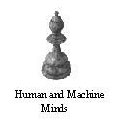![[Photo of first typwriter assembled by robotics (Universtiy Archives)]](typewriter.jpg)
![[Photo of first typwriter assembled by robotics (Universtiy Archives)]](typewriter.jpg)
Along with his own research in psychology, Herbert A. Simon pursued the development of expert systems. Expert systems are computer programs that can make expert judgements in a particular field, sometimes using the knowledge of a particular human expert.
Expert systems are built with a knowledge base of field-specific information, and an inference engine that allows the system to make informed decisions in fields such as medicine, engineering, finance and manufacturing.
Simon had predicted that the business world would come to use expert systems to make management decisions. Yet expert systems that Simon himself designed explored cognitive psychology, science, and scientific discovery. EPAM an early expert (Feigenbaum, Simon, 1956), simulated human behavior in verbal learning. While basically a learning system, showed expert capabilities by recognizing and sorting stimuli and producing responses from its data memory.
BACON and DALTON (Langely, Simon, Brashaw and Zytkow, 1987) were programs that induced scientific laws from data. BACON notices regularities in data (such as recurring events) and processes them mathematically to formulate laws. DALTON on the other hand, can theorize happenings in nature that would produce the regularity described in a BACON law.
KEKADA is a scientific discovery simulator. It designs sequences of experiments, adapting each new experience to the findings of the previous one. KEKADA has been used to replicate an experimental research strategy of the chemist Hans Krebs.
Simon and his students have lately explored creating a unified theory of perception and memory from EPAM, and a theory of the psychology of scientific discovery from BACON. Simon has also collaborated on CaMeRa (Tabachneck, Leonardo and Simon, 1997), a computer modeling of visual representation of objects. CaMeRa research could solve problems that have delayed development of visual elements in robotics. For Simon, CaMeRa may be a new scientific discovery following his research into discovery psychology.
The early research by Simon and Allen Newell into pattern recognition and problem solving led to some of the world's best-known AI news events. Work on the chess-playing machine inspired Carnegie Mellon computer scientist Hans Berliner to build HITECH (1967), the first Senior Master-level chess computer. In the 1990s, Carnegie Mellon students built Deep Thought, the first machine to play at Grandmaster level. In 1996 Deep Blue, an IBM sponsored machine designed by two of Deep Thought's creators, beat reigning world's champion match player Garry Kasparov in a headline-making 19 moves.
Artificial intelligence research as Carnegie Mellon and other universities has even become the stuff dreams are made of, inspiring movies such as 2001: A Space Odyssey, and Steven Spielberg's AI.





